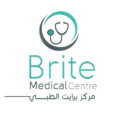Dental Advices Provided to you by: Brite Medical Center
There are plenty of people who claim that putting toothpaste in your hair is safe and effective for a variety of purposes. Using toothpaste to remove unwanted body hair, help your hair grow, and help color your hair are just some of the claims.
But some of these actually seem to contradict each other, and most of them don’t really align with the mechanism of most actual toothpaste ingredients. We did some detective work to discover if toothpaste actually does have any proven benefits when applied to your hair or scalp.
There hasn’t been any medical research done to demonstrate what happens to your hair strands when you apply toothpaste. The individual ingredients of a toothpaste formula can provide some indication as to how it can affect your hair, but every formula is different.
As a general rule, toothpaste may be able to influence your hair’s color and growth, but not necessarily in the ways that you might hope.
Certain types of toothpaste claim to whiten your teeth with lightening ingredients, such as hydrogen peroxide. Hydrogen peroxide can make your teeth appear whiter, which means it might make your hair look lighter, too.
But using hydrogen peroxide toothpaste to lighten your hair is probably not such a great idea. For one thing, toothpaste is extremely difficult to apply evenly to your hair, since that isn’t what it’s made for. There’s no tried-and-tested instructions for effectively using toothpaste to lighten hair on your body or your scalp.
Yes, leaving toothpaste on your hair long enough may bleach your hair, but that doesn’t mean you should try it. Even if whitening toothpaste can “bleach” or lighten hair on your skin and on your body, the result will be somewhat unpredictable. If you leave toothpaste on any of your hair for a significant length of time, the toothpaste will draw moisture out of your hair strand, leaving it dry and prone to breakage. It may also damage the hair follicle if applied to your skin or scalp.
It’s also not very cost effective to apply toothpaste to large sections of your hair, and can be difficult to get the toothpaste out once it dries.
You may have seen viral videos on the internet suggesting that toothpaste can be combined with other ingredients to dissolve unwanted hair, especially body hair. There is no evidence to suggest that this is an effective and safe method of hair removal.
In the process of removing hair from your skin, it’s likely that toothpaste would cause irritation. Toothpaste also contains alcohol and hydrogen peroxide, both of which dry out your skin. With many more gentle and efficient ways to remove hair from your body, there’s no strong case to be made for using toothpaste.
Many types of toothpaste contain peppermint oil, extract, or flavoring. This is probably why some people think applying toothpaste to your scalp can encourage hair growth.
It’s true that peppermint oil is a natural home remedy for regrowing hair, and it may stimulate blood flow to your scalp. There are even
But that doesn’t mean putting toothpaste on your scalp will have the same impact. Peppermint oil would need to be powerfully concentrated to impact hair growth — and the other ingredients in toothpaste dilute the peppermint extracts in your toothpaste. So it isn’t likely that topically applied toothpaste works for hair growth.
Toothpaste has some ingredients in common with skincare products and acne medication. Baking soda and sodium lauryl sulfate are two ingredients used in both skincare and toothpaste formulas. All toothpaste formulas also have antiseptic and antibacterial ingredients, such as
Toothpaste probably can dry out some bacterial pimples, and may even reduce inflammation or redness. But it’s not a recommended treatment for acne. Using toothpaste on your skin can have unpredictable results and can trigger more breakouts and result in:
Sometimes a DIY dye job can leave dark patches on your scalp and around the crown of your head. Toothpaste has been suggested as a way to remove these markings because of its lightening ingredients. Again, there is no medical research that supports using toothpaste for this purpose.
The most likely outcome is that you will get toothpaste in your freshly dyed hair, which could tamper with the color.
Side effects to coating your hair with toothpaste include:
If you’ve applied toothpaste to your hair, you may have some difficulty removing it. Most fluoride toothpaste is designed to leave behind some residue to coat and protect your teeth, so it makes sense that toothpaste can be a bit tricky to wash out of your hair.
Some toothpaste formulas have ingredients that may work to lighten, bleach or remove hair. Toothpaste is also messy and can be difficult to get out of your hair. Using toothpaste for anything besides cleaning your teeth and gums can also cause unwanted side effects, and is not supported by clinical research.
Last medically reviewed on September 18, 2020
Share this article
OUR BRANDS
Book Your Appontment with Our Dental Team Now: Call: +97444147405
